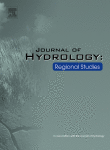View Item
- xmlui.general.dspace_homeCentros e Institutos de InvestigaciónCIRN. Centro de Investigaciones de Recursos NaturalesInstituto de Clima y AguaArtículos científicosxmlui.ArtifactBrowser.ItemViewer.trail
- DSpace Home
- Centros e Institutos de Investigación
- CIRN. Centro de Investigaciones de Recursos Naturales
- Instituto de Clima y Agua
- Artículos científicos
- View Item
Soil moisture evaluation over the Argentine Pampas using models satellite estimations and in - situ measurements
Abstract
Study region: The Pampas region is located in the central-east part of Argentina, and is one of the most productive agricultural regions of the world under rainfed conditions.
Study focus: This study aims at examining how different Land Surface Models (LSMs) and satellite estimations reproduce daily surface and root zone soil moisture variability over 8 in-situ observation sites. The ability of the LSMs to detect dry and wet events is also
[ver mas...]
Study region: The Pampas region is located in the central-east part of Argentina, and is one of the most productive agricultural regions of the world under rainfed conditions.
Study focus: This study aims at examining how different Land Surface Models (LSMs) and satellite estimations reproduce daily surface and root zone soil moisture variability over 8 in-situ observation sites. The ability of the LSMs to detect dry and wet events is also evaluated.
New hydrological insights for the region: The surface and root zone soil moisture of the LSMs and the surface soil moisture of the ESA CCI (European Space Agency Climate Change Initiative, hereafter ESA-SM) show in general a good performance against the in-situ measurements. In particular, the BHOA (Balance Hidrológico Operativo para el Agro) shows the best representation of the soil moisture dynamic range and variability, and the GLDAS (Global Land Data Assimilation System)-Noah, ERA-Interim TESSEL (Tiled ECMWF’s Scheme for Surface Exchanges over Land) and Global Drought Observatory (GDO)-LISFLOOD are able to adequately represent the soil moisture anomalies over the Pampas region. In addition to the LSM results, also the ESASM satellite estimated anomalies proved to be valuable. However, the LSMs and the ESA-SM have difficulties in reproducing the soil moisture frequency distributions. Based on this study, it is clear that accurate forcing data and soil parameters are critical to substantially improve the ability of LSMs to detect dry and wet events.
[Cerrar]

Author
Spennemann, Pablo C.;
Fernández-Long, María Elena;
Gattinoni, Natalia Noemí;
Cammalleri, Carmelo;
Naumann, Gustavo;
Fuente
Journal of Hydrology : Regional Studies 31 : 100723 (October 2020)
Date
2020-08-05
Editorial
Elsevier
ISSN
2214-5818
Formato
pdf
Tipo de documento
artículo
Proyectos
(ver más)
Palabras Claves
Derechos de acceso
Abierto
 Excepto donde se diga explicitamente, este item se publica bajo la siguiente descripción: Creative Commons Attribution-NonCommercial-ShareAlike 2.5 Unported (CC BY-NC-SA 2.5)
Excepto donde se diga explicitamente, este item se publica bajo la siguiente descripción: Creative Commons Attribution-NonCommercial-ShareAlike 2.5 Unported (CC BY-NC-SA 2.5)


